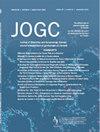Predictors of In-Hospital Opioid Consumption and Discharge Prescribing Following Cesarean Delivery
IF 2.2
Q2 OBSTETRICS & GYNECOLOGY
引用次数: 0
Abstract
Objectives
This study aimed to assess the extent to which patient and care characteristics are associated with in-hospital opioid consumption and discharge prescribing following cesarean delivery (CD).
Methods
This retrospective cohort study included patients undergoing CD under neuraxial anesthesia at a university-affiliated hospital from December 2020 to December 2021. Patient demographics, care characteristics, in-hospital opioid consumption, and discharge prescription (in number of morphine 5 mg pills) were collected from medical records. Predictors were analyzed using negative binomial regression, with multiple imputations for missing data.
Results
Overall, 904 patients were included (age 35 ± 5 years, gestational age 380 ± 26 weeks, multiple gestations 5.3%, previous CD 44.7%, emergency delivery 40.9%, and hospital stay 2.3 ± 1.1 days). In-hospital analgesia prescriptions included acetaminophen (100%), nonsteroidal anti-inflammatory drugs (91.2%), and opioids (100%). Median in-hospital opioid consumption was zero (IQR 0–2) morphine 5 mg pills. Opioid consumption was associated with opioid use during pregnancy (incidence rate ratio [IRR] 9.419; 95% CI 3.425–25.900), higher postoperative pain scores (IRR 1.599; 95% CI 1.524–1.678), higher post-anesthesia care unit opioid consumption (IRR 1.007; 95% CI 1.002–1.013), and nonsteroidal anti-inflammatory drugs consumption (IRR 0.613; 95% CI 0.460–0.818). At discharge, 89.2% of patients were prescribed opioids (median = 20 [IQR 20–20] morphine 5 mg pills). Decreased discharge prescribing was associated with receiving a preprinted discharge prescription with fewer morphine 5 mg pills (10 vs. 20; 0.548 [95% CI 0.389–0.770]).
Conclusions
In this study, in-hospital opioid consumption following CD was low and was associated with patient and care-related factors. At discharge, the only factor associated with prescription size was the use of preprinted prescriptions. These findings can inform strategies to mitigate opioid-related harms following CD.
剖宫产后院内阿片类药物消耗和出院处方的预测因素。
目的:评估患者和护理特征与剖宫产(CD)后住院阿片类药物消耗和出院处方相关的程度。方法:本回顾性队列研究纳入了2020年12月至2021年12月在某大学附属医院接受神经轴向麻醉的CD患者。从医疗记录中收集患者人口统计、护理特征、住院阿片类药物消耗和出院处方(吗啡5mg丸的数量)。使用负二项回归分析预测因子,并对缺失数据进行多重估计。结果:共纳入904例患者(年龄35±5岁,胎龄38±3周,多胎5.3%,既往CD 44.7%,急诊分娩40.9%,住院时间2.3±1.1 d)。院内镇痛处方包括对乙酰氨基酚(100%)、非甾体类抗炎药(91.2%)和阿片类药物(100%)。院内阿片类药物消耗中位数为0 [IQR 0-2]吗啡5mg片。阿片类药物消耗与妊娠期间阿片类药物使用相关(发病率比[IRR] 9.419 [95%CI 3.425-25.900]),术后疼痛评分较高(IRR 1.599 [95%CI 1.524-1.678)),麻醉后护理单位阿片类药物消耗较高(IRR 1.007 [95%CI 1.002-1.013]),非甾体抗炎药消耗较高(IRR 0.613 [95%CI 0.60 -0.818])。出院时,89.2%的患者处方阿片类药物(中位数= 20 [IQR 20-20]吗啡5mg片)。出院处方的减少与接受预先打印的出院处方中吗啡5mg丸的减少相关(10比20;0.548 [95%CI 0.389-0.770])。结论:在本研究中,CD后住院阿片类药物消耗较低,且与患者和护理相关因素相关。出院时,与处方大小相关的唯一因素是使用预印处方。这些发现可以为减轻CD后阿片类药物相关危害的策略提供信息。
本文章由计算机程序翻译,如有差异,请以英文原文为准。
求助全文
约1分钟内获得全文
求助全文
来源期刊

Journal of obstetrics and gynaecology Canada
OBSTETRICS & GYNECOLOGY-
CiteScore
3.30
自引率
5.60%
发文量
302
审稿时长
32 days
期刊介绍:
Journal of Obstetrics and Gynaecology Canada (JOGC) is Canada"s peer-reviewed journal of obstetrics, gynaecology, and women"s health. Each monthly issue contains original research articles, reviews, case reports, commentaries, and editorials on all aspects of reproductive health. JOGC is the original publication source of evidence-based clinical guidelines, committee opinions, and policy statements that derive from standing or ad hoc committees of the Society of Obstetricians and Gynaecologists of Canada. JOGC is included in the National Library of Medicine"s MEDLINE database, and abstracts from JOGC are accessible on PubMed.
 求助内容:
求助内容: 应助结果提醒方式:
应助结果提醒方式:


